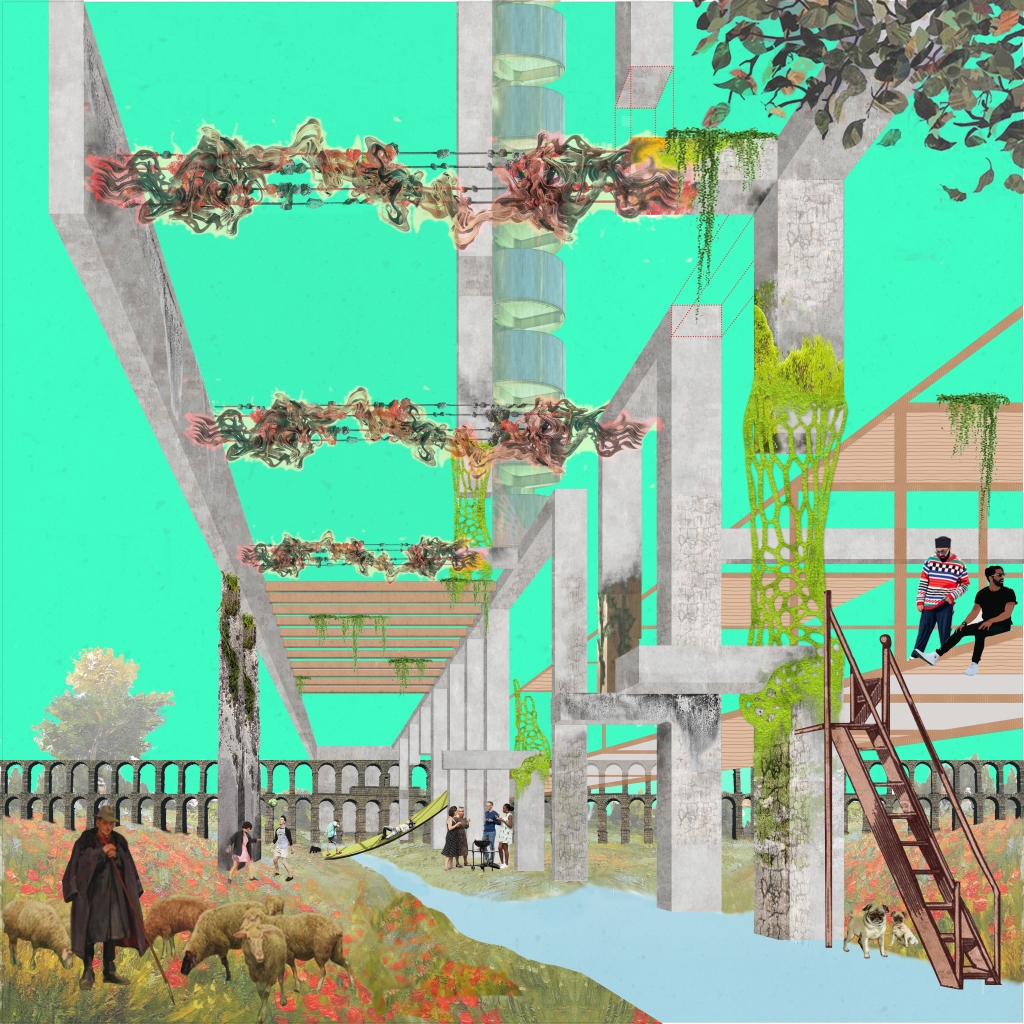
“Staying with the trouble requires making oddkin; that is, we require each other in unexpected collaborations, in hot compost piles. We become-with each other or not at all. That kind of material semiotics is always situated, someplace and not no place, entangled and worldly”
-Donna J. Haraway
The Patna Opium Factory-a symbol of segregation and colonialism, has been reinterpreted as a space for collaborative thinking for inventiveness. The space of the future is compared to a compost pit, where all the myriad elements (both living and non-living) come together, lose their individual characteristics and turn into the thick, black humus. Akin to this humus; which nourishes the soil and facilitates further interspecies interaction, the space is converted into a datum for beings to come together to collaborate and meld their knowledge and experience for a better present and future.
Eroded by time, the structural rigidity of the colonial past is broken and its place is taken by the light hybrid structure. The crumbling, old and heavy columns of the factory go into a relationship with the algae like organism which takes over this non-living element and become the prosthetics for the structure; thus mutating the factory for the space of the future and in process removing the redundancy of the past. The space is connected to the adjacent river through an aqueduct, carrying water for the living in the building and beyond.
Open and inviting, the building no longer remains someplace-where exploitation and racism was practiced to make opium, but it becomes no place. This no place is a democratic space, used by everyone irrespective of their caste, creed, sexuality, nationality, gender or social status. It is a place which is truly in present. It is the Eco tone, a threshold across time and space, where things meet and integrate.
Harshil Amin PG190364